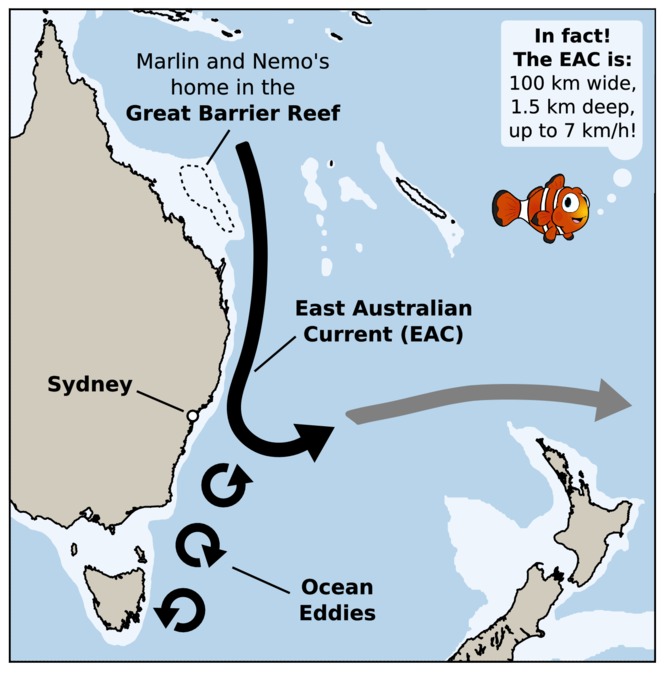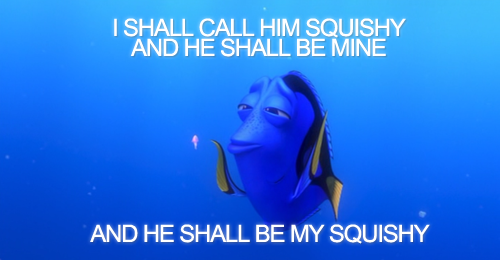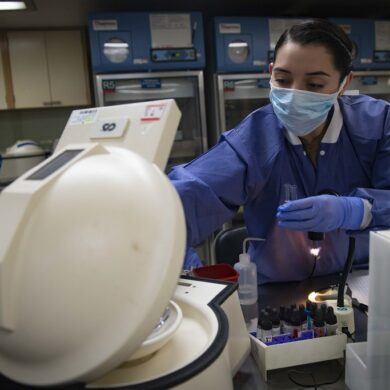Lexie Frye Rochfort | Blogger | SQ Online (2014—15)
I’m not really into football, so I never watch the Super Bowl. I care only about the new Jurassic World trailer, which got me thinking about other things that aren’t coming out in forever. Despite being revealed in 2013, Finding Dory won’t be in theaters until 2016. In the meantime, I decided to watch Finding Nemo, and we’ve got something odd off the coast of Australia at the Great Barrier Reef.
Residing in a sea anemone, Marlin and Nemo are clownfish of the subfamily Amphiprioninae, and they are sequential hermaphrodites. This means that at some point in the clownfish life, they will switch sex from male to female. After the older, female clownfish dies, this switch occurs: the dominant male grows female gonads. Whether male or female, Marlin shows himself to be a great parent to Nemo.
Dory tries to be a good parent to her little “Squishy,” but oddly enough, just like in Spongebob, jellyfish are shown to electrocute what they touch. Though they look like fish made of jelly, jellyfish are aquatic venomous predators whose tentacles contain nematocysts. Nematocysts are basically little darts that fire out of cells called cnidocytes when the tentacle is stimulated (by touching a yummy clownfish, for example). There’s an average of 5,000 cnidocytes per tentacle, so any encounter usually means thousands of strings of very potent venom. Aside from the very real danger of shock or heart failure, the venom is dermonecrotic (kills skin cells), leaving plenty of scars.  Sea anemone also have tentacles containing cnidocytes for defense and predation, but the mucus coating on all clownfish prevents Marlin and Nemo from being stung and eaten.
Sea anemone also have tentacles containing cnidocytes for defense and predation, but the mucus coating on all clownfish prevents Marlin and Nemo from being stung and eaten.
While we’re talking about tentacles, remember Pearl, that cute pink octopus? The one with one particularly short tentacle? That’s her penis. Yeah, the hectocotylus is the tentacle shorter than the rest, and it is a modified arm that holds rows of sperm. During mating, it’s common for male octopi to remove the arm and present it to a receptive female, which keeps it for future use. The other issue is that she’s of the species Opisthoteuthis californiana, which is found in the deep sea abyss, so Pearl would be a pile of burst cells at the lower pressures of the Great Barrier Reef. This pressure difference causes the inside of cells to expand more than the cell membrane can stretch, which causes the membrane to break in what’s called cytolysis.
On the subject of differences, in a world where whales can talk to fish, who can talk to birds, why can’t humans talk to other animals? Maybe we don’t listen? The sea life that Marlin, Dory, and Nemo encounter routinely badmouth humans, so maybe they don’t want to talk to us? That’s a good environmental message to leave on.
[hr gap=”0″]
Sources:
- https://62e528761d0685343e1c-f3d1b99a743ffa4142d9d7f1978d9686.ssl.cf2.rackcdn.com/files/50243/width668/b7cmzjx2-1401863367.jpg
- http://40.media.tumblr.com/tumblr_lkcfmqp4ER1qjyj5xo1_500.png
- http://a-z-animals.com/animals/clown-fish/
- http://animals.howstuffworks.com/marine-life/jellyfish-venom1.htm
- http://animals.howstuffworks.com/marine-life/octopus5.htm
